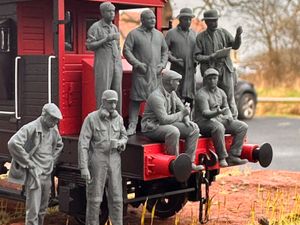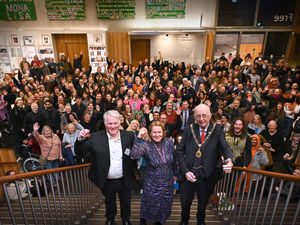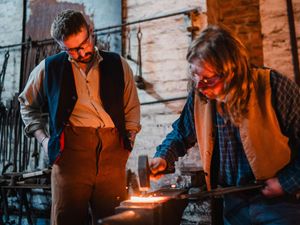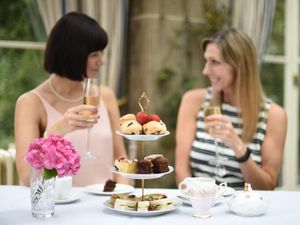Art collection dazzles visitors in new home - 70 years on
An offer to rescue an internationally valued art collection has been accepted 70 years after it was originally made - and the result is now on show at Wightwick Manor's £170,000 new gallery.
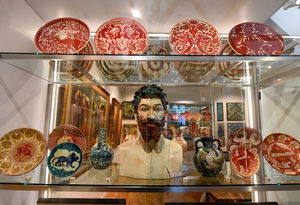
The De Morgan collection of paintings and ceramics has twice been homeless. The initial offer to provide a home at Wightwick for the elegant and richly coloured paintings and ceramics came as the clouds of war gathered over England in the late 1930s.
It was made by Sir Geoffrey Mander who, as well as being a Liberal MP for Wolverhampton and head of the family’s paint and varnish empire, was also a highly respected patron of the arts. He and second wife Rosalie had filled their Victorian manor home with paintings, furniture and art objects that were fashionable at the time.
The Manders were great admirers of the work of William and Evelyn De Morgan, among the arts and crafts movement's leading lights, and had offered to save the collection from potential destruction by Nazi bombs in the expected blitz on London. By that time the couple's style was considered too 'chocolate-boxy' for the modernist tastes of the inter-war period.
As it turned out, a secure wartime location had already been found for the collection but the offer to give it refuge had been appreciated and the two families became friends.
The latest offer of help came after Wandsworth Council declined to renew the lease on the the dedicated centre in London where the collection was displayed until 2011. Wightwick Manor stepped forward again - and this time its offer was accepted.
The collection is considered the most valuable anywhere of works created by studio ceramicist William De Morgan and paintings by his pioneering wife, Evelyn.
He worked with legendary wallpaper and fabric designer William Morris, supplying Morris & Co with iconic red lustre tiles and decorative ceramics, while she studied art at the Slade School and developed a vivid technique in the later Pre-Raphaelite style. Together they were regarded as the Victorian era's most creative couple.
Their work will be housed for the next 10 years in the upper gallery of the Malthouse, previously a school room for the Mander children and later a squash court. The house, built by the millionaire industrialist's father, Theodore Mander, has been run since 1937 by the National Trust.
The Trust said it felt ‘honoured to be able to uphold that offer of homing part of the De Morgan Collection.’
Six weeks after the exhibition opening, hundreds of people have been to see the collection.
John Wood, the conservation and development manager for the house, said: "The feedback has been amazing. People love it and one of the things they say is that the collection works so well in this setting.
"It feels like the right collection in this space. People have been really positive. Because of the vibrancy of the works, a lot of visitors think they paintings have been professionally cleaned but they haven't, it's all down to the skill of the artist."
Mr Wood said the whole collection of more than 100 ceramics and 18 paintings would not be seen at the same time but sections would be displayed in rotation over the next decade. The gallery was also delighted to negotiate the loan of a portrait of William De Morgan by his wife Evelyn from the National Portrait Gallery.
Although the De Morgans never visited the house, there were already many links with Wightwick, including De Morgan tiles filling many of the fireplaces. Rosalie Mander was a close friend of Anna Stirling, Evelyn's younger sister. Stirling formed the collection, and the foundation was formed to preserve it permanently on her death in 1965.

